|
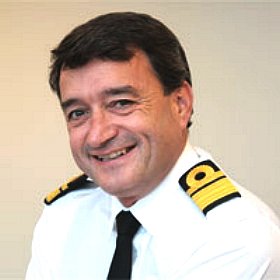
Chairman
- Rear Admiral Nick Lambert
CONFERENCE
& EXHIBITION NOVEMBER 21 2013 -
incorporating The ECDIS Revolution
Are
we on track? - 20th
and 21st November 2013, London, UK
Early
bird rates are available for this conference - book before the 14th
October.
Incorporating
the ECDIS Revolution, The e-Navigation Revolution Conference &
Exhibition, takes place in London on 20th & 21st November, 2013.
Building
on the success of the ECDIS Revolution staged in London over the last 3
years, The e-Navigation Revolution will bring together a global audience
of senior-level delegates to explore a wide range of electronic navigation
issues. Comprising presentations from industry leaders, interactive
workshops and lively panel discussions, this international forum will
provide the ideal platform for debating hot issues, learning about new
technologies and creating new business opportunities.
Chaired
by Rear Admiral Nick Lambert, previous Hydrographer of the Royal Navy,
topics to be covered in the conference include Digital Publications, GNSS
vulnerability, ENC, GPS jamming, back-up systems, ACCSEAS, how the deck
officer of the modern world different from his predecessors , training,
and the human element.
The
exhibition running alongside the conference will offer e-navigation
equipment providers unrivalled openings to reach key decision-makers and
influencers in the buying process while their minds are focused on the
subject. Exhibitors will have a tailor-made vehicle for demonstrating
their products and services to a highly targeted audience.
The
e-Navigation Revolution Conference and Exhibition is essential for anyone
affected by e-Navigation including ship owners, operators and managers,
seafarers, pilots, equipment manufacturers and suppliers, regulators,
training companies, associations, insurers, hydrographic offices,
classification societies, ship builders, lawyers and consultants.
In
collaboration:

If
you are interested in speaking opportunities please email: Steve@ecdisrevolution.org
or
telephone 44 (0) 208 531 6464
If
you are interested in sponsorship opportunities please email: Lorna@quaynote.com
or
telephone 44 (0) 208 531 6464
Exhibitors:


AGENDA
(subject to change)
|
DAY
ONE:
|
08.00
|
Refreshments,
registration and exhibition
|
|
09.00
|
Conference
organizer`s opening remarks
|
|
09.05
|
Welcome
from the Chair – Reviewing the past 12 months
|
|
Update on key issues
surrounding ECDIS since last year`s conference
We’re into
implementation – what’s the feedback
Lessons learned
Nick Lambert – Conference chair
|
09.15
|
Keynote speaker
|
|
Session
One: Management and Regulations
|
|
09.35
|
Where are we, one year on?
|
Comments from a
management company who embrace ECDIS
The highs and
lows. Are we getting it right and what advice would we
give to others
Jörgen Strandberg, Marine Performance Manager, Rickmers Ship
Management
|
09.55
|
Managing the changes.
|
What we would include in an
owners manual
The bits they
don’t tell you about in the sales brochure
|
10.15
|
E-Navigation
–How will it all come together?
|
Will it really make a
difference?
Will it lead to
the unmanned bridge?
Dr Andy Norris, Vice President of the Nautical Institute
|
10.35
|
Questions
|
|
10.55
|
Refreshments and
Exhibition
|
|
Session
Two: Equipment, Communication and Charting
|
|
11.25
|
Chart development
|
What are the Hydrographic
offices trying to achieve?
What doesn’t
the mariner understand about updates?
Paul Elgar, Jeppesen
|
11.45
|
Cell construction,
standards and contents
|
Survey accuracy,
sending the updates and keeping it simple.
What are the standards and are
all Hydrographic offices meeting them
Anomalies in the
system – what’s being done about them?
|
12.05
|
Getting the data to the
ship
|
What are the options for
updates?
What works and
what doesn’t
Do the communications industry
recognise the importance of this?
Are costs going
to reduce and when?
Roger Horner, Group Managing Director, e3 Systems
|
12.25
|
Questions
|
|
12.40
|
Lunch and Exhibition
|
|
14.00
|
Keynote Speaker
|
|
14.20
|
Afternoon intentions brief
Key aspects to be considered within each workshop include:
|
*
Simplicity
*
Commonality,
*
Familiarity,
*
Reliability
Nick Lambert – Conference Chair
|
14.30
|
Workshop 1
Delegates split into two groups
Group 1 – Management and Regulations
Group 2 – Equipment, Communications and Charting
|
|
15.30
|
Refreshments
|
|
16.00
|
Workshop 2 (Rotation of
the above. Delegates move to the other group)
Delegates split into two groups
Group 1 – Management and Regulations
Group 2 – Equipment, Communication and Charting
|
|
17.05
|
Group 1 lead delegate
debrief
Lead representative of group 1 to debrief the delegates on
subjects discussed and options or policies for
consideration
|
|
17.15
|
Group 2 lead delegate
debrief
Lead representative of group 2 to debrief the delegates on
subjects discussed and options or policies for
consideration
|
|
17.25
|
Day 1 summary
Nick Lambert – Conference Chair
|
|
17.30
|
Cocktail Party and
equipment exhibition
|
|
19.00
|
End of conference Day One
|
DAY
TWO
| DAY
TWO: Moving on |
| 08.30 |
Refreshments and
exhibition |
| 09.05 |
Chair to conduct review of
yesterday’s discussions |
| 09.10 |
Keynote speaker: Dr Mark
Nicholson, Senior Research and Teaching Fellow, University
of York |
| Session
Three: Human Element Leadership and Management (HELM) and
the Practical Use |
| 09.35 |
HELM – What is it
|
What’s it all
about?
Why has it been included in
the training syllabus?
What’s
expected and what are we trying to get out of the OOW
What it revealed
and what we should take note of.
Lessons learnt
and where we need to help the mariner.
Lars Lippuner, Business Development Manager, Warsash Maritime
Academy
|
10.15
|
TBC
|
|
10.35
|
TBC
|
|
10.55
|
Refreshments and
Exhibition
|
|
Session
Four: Training
|
|
11.20
|
Is anyone looking after
the Officer Of the Watch?
|
The view from the bridge
- Is my career safe?
Where do I see the future?
|
11.40
|
Flag state standards
|
The importance
of crew training and understanding why it’s necessary
Standards we want to see and
why.
|
12.00
|
What we’re
finding when it goes wrong.
|
The view from the
investigators perspective
Common errors and
mistakes - What seems to be
being ignored by the industry?
Tony Brown, Principal Inspector, Marine Accident Investigation
Branch (MAIB)
|
12.20
|
Questions
|
|
12.40
|
Lunch and Exhibition
|
|
14.00
|
Afternoon intentions brief
Nick Lambert – Conference Chair
|
|
14.10
|
Workshop 3
Delegates split into two groups
Group 1 – HELM and Practical
Group 2 – Training
|
|
15.10
|
Refreshments
|
|
15.40
|
Workshop 4(Rotation of the
above. Delegates move to the other group)
Group 1 – Equipment
Group 2 – Management
|
|
16.50
|
Group 1 lead delegate
debrief
Lead representative of group 1 to debrief the delegates on
subjects discussed and options or policies for
consideration
|
|
17.00
|
Group 2 lead delegate
debrief
Lead representative of group 2 to debrief the delegates on
subjects discussed and options or policies for
consideration
|
|
17.10
|
Chair’s closing remarks
|
The way forward
- Points for action
|
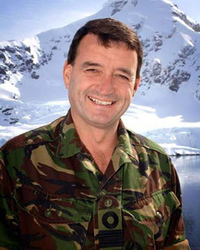
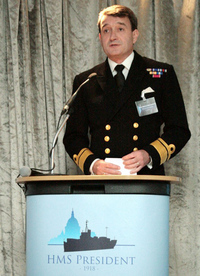
ABOUT
THE CHAIRMAN
Nick Lambert
was elected to Committee and as the Chairman in April 2010. His retirement
from the committee is due in December 2014.
Rear Admiral Nick Lambert joined the Royal Navy as a seaman in March 1977. He gained an honours degree in Geography at the University of Durham in 1983.
Nick graduated in Geography from the University of Durham in 1983. He joined the Royal Navy as a Seaman in 1977.
He joined the UKHO with a long and distinguished Naval background.
The
Chairman qualified as a Principal Warfare Officer in 1986. He accumulated over 15 years operational seagoing experience in five warships serving in the South Atlantic, Persian Gulf, Adriatic and numerous other parts of the world. He commanded the ice patrol ship HMS Endurance from 2005-2007 before, on promotion to Commodore, commanding Task Force 158 in the North Arabian Gulf. Since January 2008 he has been Deputy Flag Officer Sea Training.
He has spent much time at sea on HM Ships including Birmingham, Ark Royal, Cardiff and has commanded HMS Brazen and HMS Endurance.
He commanded the ice patrol ship HMS ENDURANCE from 2005-2007, deploying for two fascinating and deeply rewarding seasons in
Antarctica. Promoted in February 2007, he commanded Task Force 158 in the North Arabian Gulf, tasked with the protection of Iraq's economically vital offshore oil infrastructure. Thereafter he was Deputy Flag Officer Sea Training from 2008 to 2009 before assuming the role of Assistant Chief of Staff Operations and Capability Integration in November 2009 in the Navy Command Headquarters. Promoted to Rear Admiral, he became the UK National Hydrographer on 19 August 2010.
Nick Lambert married Beverly in 1989; they have two children and live in Somerset. Apart from family and an as yet unfulfilled ambition to manage the construction of his own house, his interests include gliding, cookery, gardening and sailing.
Nick is married with two children. He is a Henley Management College qualified executive coach, a member of the Honourable Company of Master Mariners, a friend of the Scott Polar Research Institute and Chairman of the Royal Navy Gliding and Soaring Association. A passionate glider pilot, he also enjoys cookery, gardening and running.
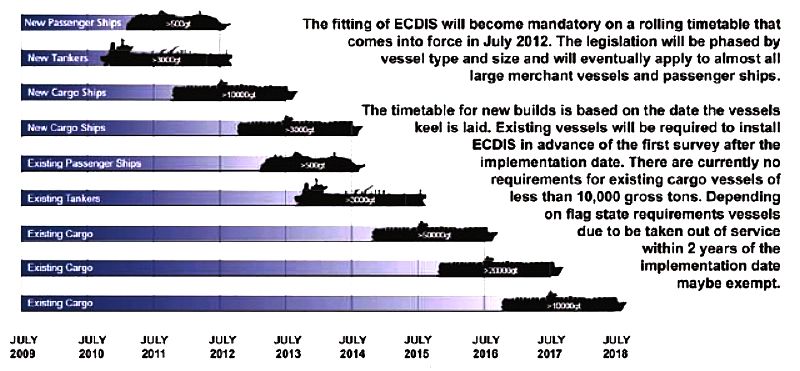
LINKS http://www.maritimejournal.com/news101/industry-news/ukho-appoints-new-national-hydrographer http://www.ths.org.uk http://www.spri.cam.ac.uk/friends/committee/ http://www.thefutureofnavigation.com/ten_steps.aspx http://www.quaynote.com/ankiti/www/?code=ecdis13&f=programme
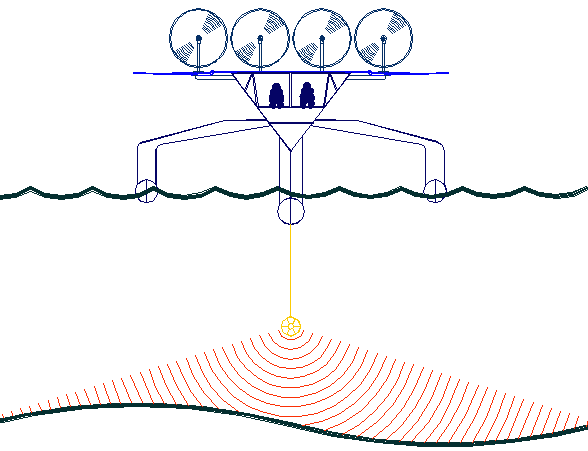
The
key to accurate hydrographic mapping is continuous monitoring, for which
the SNAV platform, presently under development, is a robotic ocean
workhorse. Based on a stable SWASH
hull this design is under development by British
engineers. The robot
ship uses no diesel fuel to monitor the oceans autonomously (COLREGS
compliant) at relatively high speeds of 7-10 knots, 24/7 and 365 days a year - only
possible with the revolutionary (patent) energy harvesting system. The
hullform is ideal for automatic release and recovery of ROVs
or towed arrays, alternating between drone and fully autonomous modes.
UK and international development partners are welcome. This vessel
pays for itself in fuel saved every ten years.
|






